Innovators are often hailed as groundbreaking trailblazers; leaders who are ahead of their time, who are often the masterminds behind extremely successful – and useful – inventions. When these inventors are triumphant, they are praised for their achievements, often creating products that enhance our lives or allow us to further explore in one way or another.
According to Earl Nightingale, everything starts with an idea. You simply need to look at the world around you to see how many things started as just an idea. Mankind has the unique ability to transform thoughts and concepts into material realities. Everything you see, from computers to bricks, began as an idea in someone’s head. Many of these inventions have been praised and they have changed our lives in more ways than one.
Many life changes have had a positive impact on us. But at times, the very thing created to make life better is often the same thing that takes it away. Whether it’s fate, destiny, or just bad luck, a surprising number of inventors were later killed by the very thing they created. While many of them make sense, as with the heaps of vehicle and airplane inventors killed while testing their designs, others will boggle the mind.
For a select few inventors, their manifestation proved to be their ultimate undoing. Some are well-known, others are obscure, but all of them will leave you wondering what can happen when we impose our ideas on existence. (For inventions that had a positive impact, see these famous scientific discoveries that changed the course of history.)
To compile a list of innovators who died from their own inventions, 24/7 Tempo consulted a range of entertainment and lifestyle publications, including Discover Magazine. We then chose inventors from various industries and eras in time, then confirmed biographical information about the inventors using sites like The Automotive Hall of Fame and Atlas Obscura.
Webster Wagner
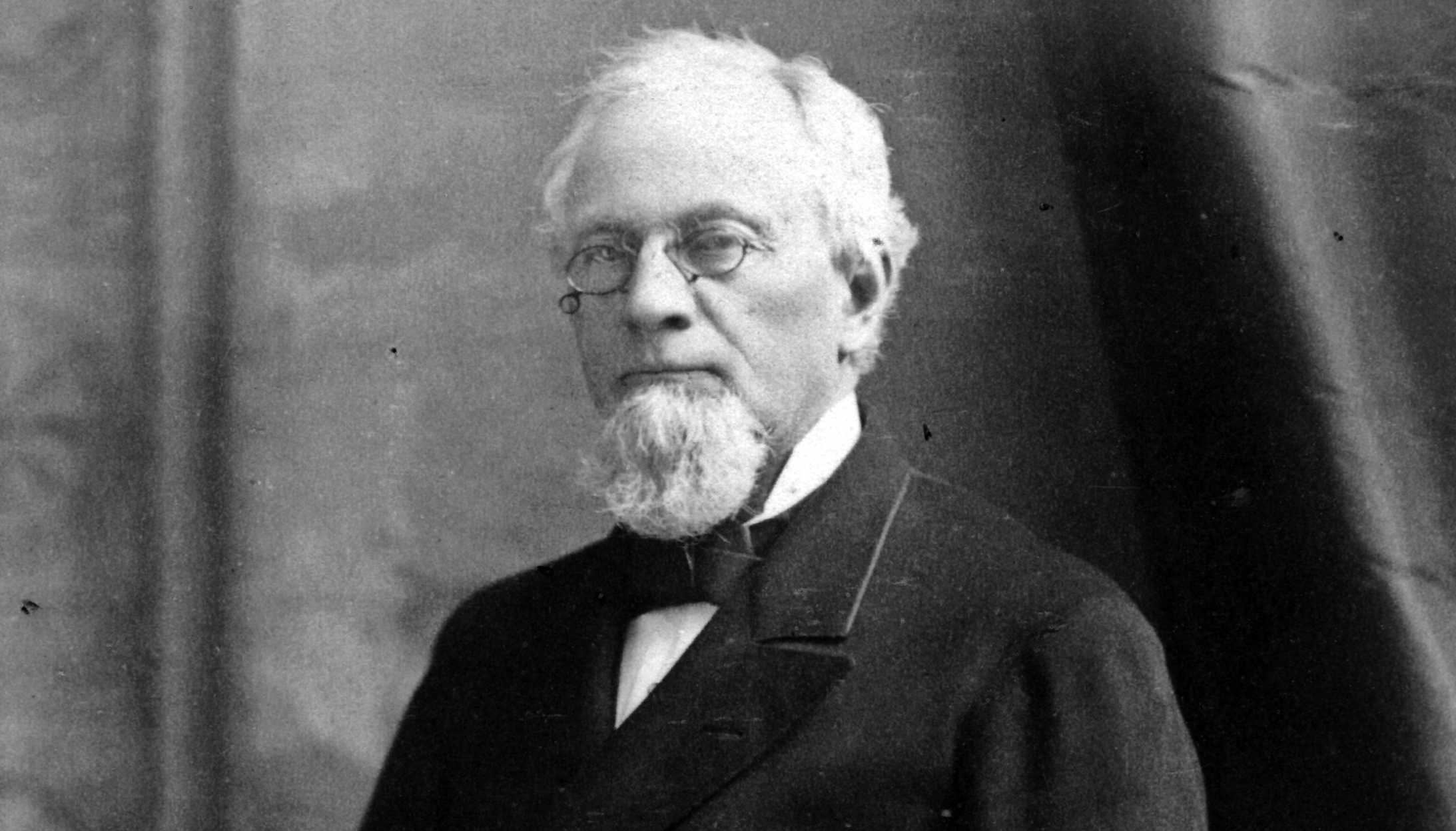
Source: Daniel Case / Wikimedia Commons
Invention: sleeping train car, the parlor car, and a ventilation system for railroad cars
A manufacturer, inventor, and politician from New York, Wagner created his fateful designs while working for the New York Central Railroad. He later became a New York State Senate and Assemblymember, but his post was short-lived. In 1882, while traveling on a rail trip between Albany and New York City, his train and another collided. After the dust settled, Wagner was crushed between two railroad cars that he invented.
Henri Thuile
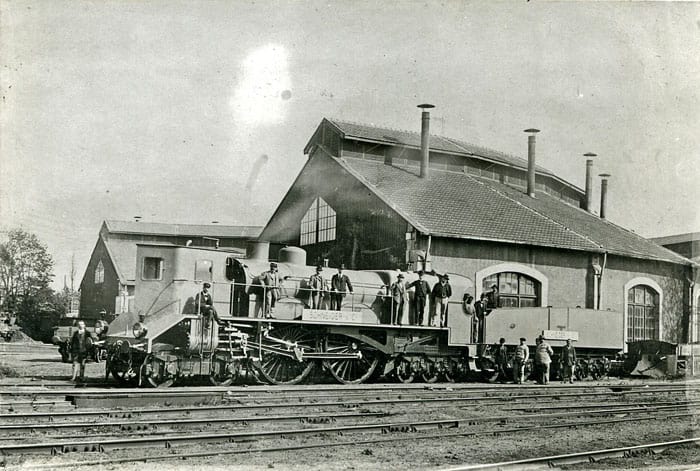
Invention: Thuile steam-powered locomotive train
Frenchman Thuile was killed during a machine test run between the French cities of Chartres and Orléans. Reports differ on his exact cause of death, however. Some say he was thrown from the craft and died upon hitting a telegraph pole. Others say he leaned too far outside of the train compartments, whereby a collision with a piece of bridge scaffolding killed him instantly.
Valerian Ivanovich Abakovsky
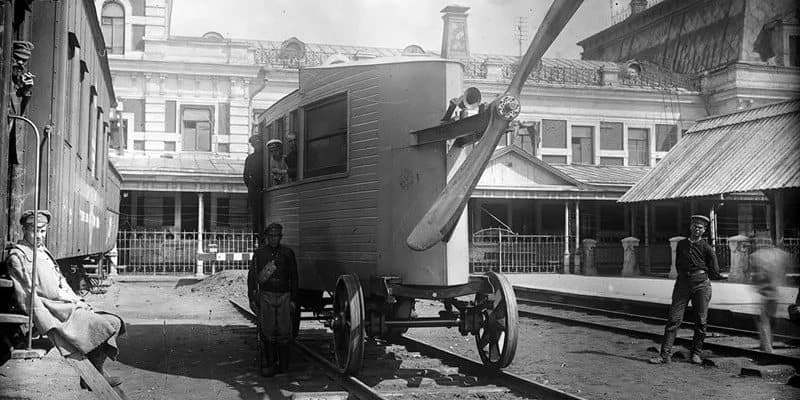
Invention: Aerowagon (a high-speed train outfitted with an airplane engine and propeller to ensure maximum speed)
The Russian inventor began as a chauffeur for the Soviet secret police before his high-speed train caught the attention of Soviet officials. The Aerowagon was then tested with several people on board, including Russian politicians and Abokovsky. The machine successfully made the first leg of its journey to Tula, but it failed to arrive back in Moscow. Instead, the Aerowagon derailed at high speeds, killing everyone on board, including Abakovsky.
Alexander Bogdanov
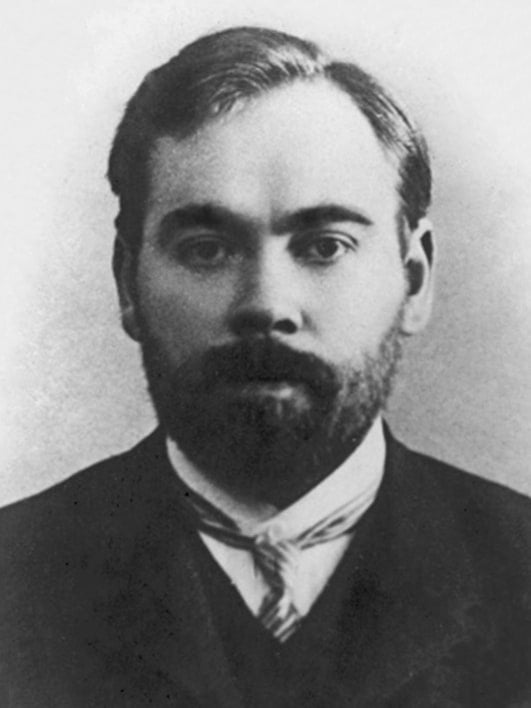
Invention: first Institute of Blood Transfusion
Bogdanov, a Russian polymath, was a Bolshevik revolutionary and a hematology science pioneer. This led to his groundbreaking institute. However, the science was in its infancy, and Bogdanov made a fatal mistake when attempting a direct blood transfusion.
Believing his blood was resistant to tuberculosis, Bogdanov attempted a mutual blood transfusion between himself and a 21-year-old student with an inactive case of tuberculosis. His hypothesis that the transfusion would rejuvenate his own blood and treat the student’s disease proved a mistake. Instead, Bogdanov died almost instantly from acute hemolytic transfusion reaction.
Thomas Midgley Jr.
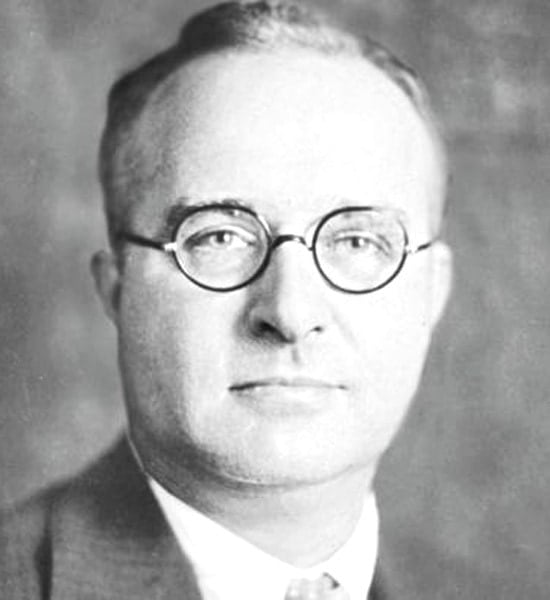
Invention: a complex system of pulleys and levers to assist in being lifted out of bed, among others
A noted engineer and chemist, Midgley Jr. contracted a severe case of polio at the age of 51. This left him severely disabled. Before contracting polio, Midgley Jr. was known for his inventions of tetraethyl lead, an additive for gasoline, as well as chlorofluorocarbons.
However, his special rope and pulley system invention proved to be his last. At age 55, he became entangled in his rope system and subsequently died of strangulation. While it was reported to the public that his death was an accident, privately, it was reported to be a suicide.
Stockton Rush

Invention: Oceangate ship
A wealthy businessman, pilot, and engineer, Rush oversaw the design and building of the Oceangate ship, which was created to ferry tourists deep underwater to view the wreckage of the Titanic.
However, during a submersible test, some aspects of the design or construction proved fatal. While carrying a few other people on board, including Rush, the craft imploded deep underwater, killing everyone on board. In a bit of hubris, Rush was quoted beforehand as saying, “Safety is just pure waste.”
William Pitt

Invention: devised an underwater cable ferry
Pitt was an engineer and ferryman from New Brunswick, Canada who operated a ferry company for decades, whisking travelers between Kingston Peninsula and the Kennebecasis Valley. It was during that time that Pitt developed an underwater cable ferry, which he installed between Reed’s Point and Gondola Point.
Though the invention proved successful, it would also take Pitt’s life. After falling into the machinery of the new ferry invention, Pitt died from serious injuries.
John Day

Invention: wooden diving chamber
A carpenter and wheelwright by trade, Day convinced a patron to put up the money for a wooden diving chamber of his design. Betting his patron he could descend at least 130 feet, Day boarded his diving chamber and sunk to the depths of Plymouth Sound off the coast of England.
Unfortunately, Day had miscalculated the trim on the diving chamber and died due to extreme pressure during his descent. It is believed he died of either asphyxiation, disastrous structural failure, or hypothermia. His was the first death attributed to a submarine.
Henry Winstanley

Invention: Eddystone Lighthouse
Winstanley was a painter, engineer, and maritime merchant who decided to create a lighthouse after losing two of his ships on the Eddystone Rocks near Cornwall, England. The ornate-looking Eddystone Lighthouse was a success. During its five years of operation, not a single ship crashed on the nearby rocks.
The marine merchant wasn’t so lucky. Winstanley had so much faith in his creation that he planned to reside inside it during the Great Storm of 1703. The storm proved to be too much for the lighthouse to bear as it was destroyed, killing five men inside, including Winstanley.
Dr. Sabin Arnold von Sochocky

Invention: luminescent paint, United States Radium Corporation (originally called the Radium Luminous Material Corporation)
Not only is von Sochocky credited as the inventor of luminescent paint, but he subsequently founded the United States Radium Corporation (this company was later involved in various lawsuits for the death of its workers, most famously the Radium Girls). He was unaware of the disastrous effects of radium on the human body and eventually died from aplastic anemia due to the radioactive paint of his own design.
William Bullock
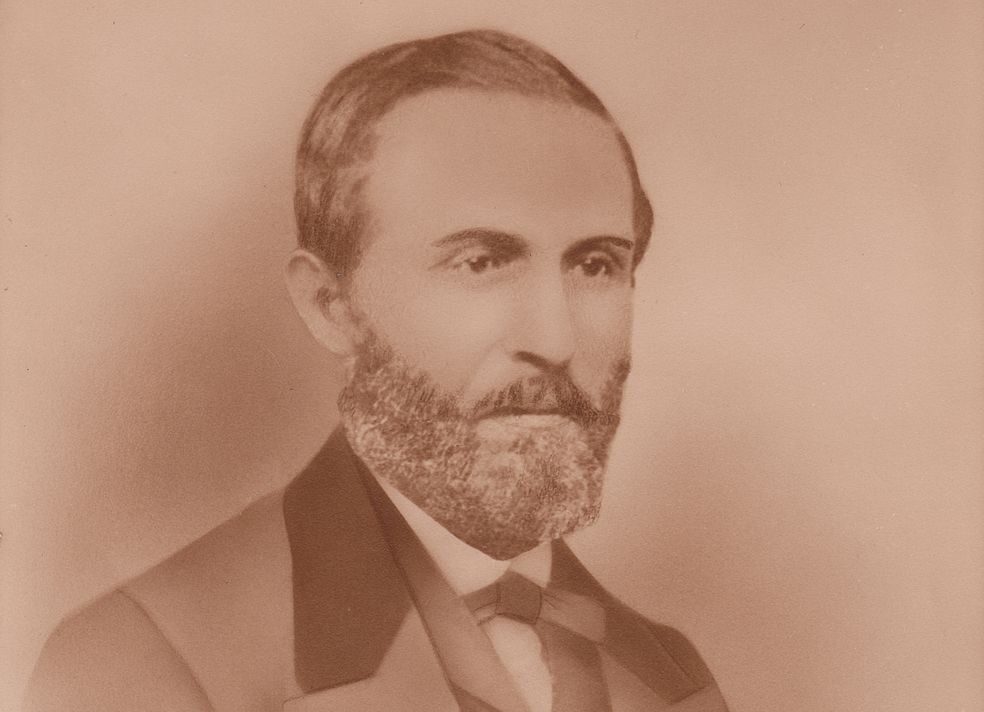
Invention: improvements to the rotary printing press
American inventor William Bullock was credited in the 19th century with improvements to the rotary printing press, which increased its speed and efficiency and helped catalyze the then-developing printing industry. However, in 1867 while adjusting one of his machines in Philadelphia, he attempted to kick a driving belt onto a pulley. Instead, his leg was caught and crushed in the machine. Bullock subsequently developed gangrene and died during a leg amputation surgery.
Karel Soucek

Invention: shock-absorbent barrel
A Czech-born stuntman by trade, Soucek later emigrated to Canada, where he created a shock-absorbent barrel to use in his stunts. He famously went over Niagara Falls in a barrel and survived. However, a barrel demonstration at the Houston Astrodome in 1985 proved to be his last. Soucek died after the barrel hit the rim of the water tank meant to cushion his fall. (For more successful stunts, discover jaw-dropping movie stunts you need to see.)
Cowper Phipps Coles

Invention: designed various machines, including a revolving gun turret for ships
Coles was a British naval captain and inventor who spent much of his life at sea. He used his experience to design various machines, including a revolving gun turret for ships. Upon public appeal, Coles secured the installment of his invention on various English battleships. His voyage on the HMS Captain, a ship built using his designs, proved fatal. Due to intense weather, the HMS Captain’s hurricane deck caught the wind and capsized the boat, killing everyone on board, including Coles.
William Nelson

Invention: motorized bicycle
While employed by the General Electric Corporation in upstate New York, Nelson created a motorized bicycle. Whether or not the bike was revolutionary, we will never know. That’s because Nelson died instantly at the age of 24 during a test run of his invention.
Fred Duesenberg
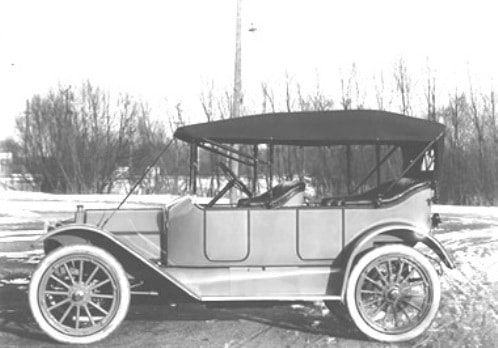
Invention: eight-cylinder engine, four-wheel hydraulic brakes
A pioneer of automobile design, Duesenberg helped influence the creation of the modern car. He is also credited with inventing the eight-cylinder engine and four-wheel hydraulic brakes. Subsequently, Duesenberg and his brother founded the Duesenberg Motor Company. During its heyday, the Duesenberg Motor Company introduced classic vehicles such as the Duesenberg Model A and Models X, S, and J.
The brothers were also involved in auto racing. While driving a Duesenberg passenger car with a prototype engine, Fred lost control of the vehicle, flipping it and seriously injuring himself. From this, he developed pleural pneumonia and subsequently died.
Francis Edgar Stanley
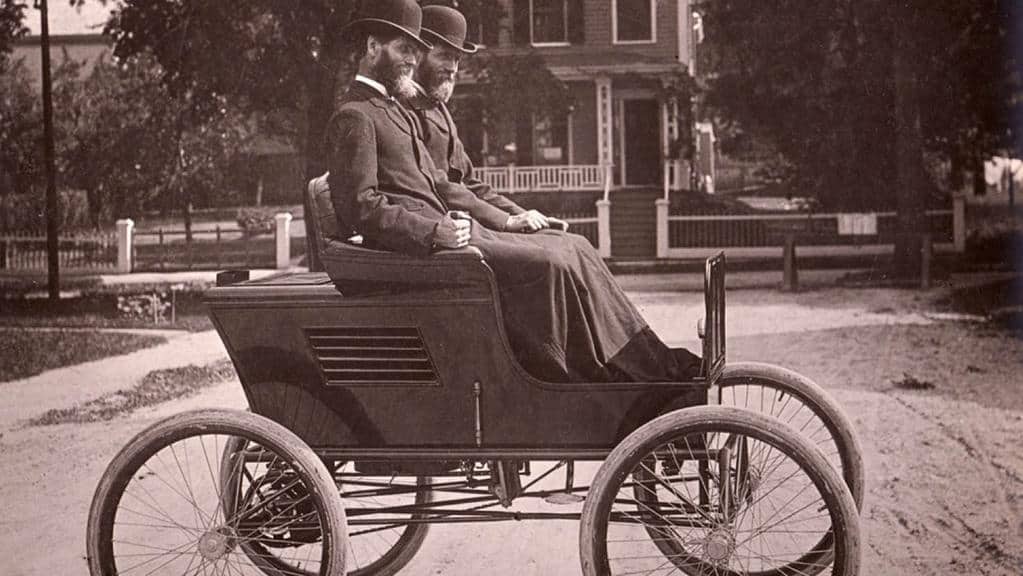
Invention: steam-powered vehicle
Though Stanley made his wealth on the photographic plate, he later turned his sights on automobiles. This led to the founding of the Stanley Motor Carriage Company and its infamous steam-powered vehicle, the Stanley Steamer.
The Stanley Steamer achieved a new land speed record in 1906, clocking in at 127.6 mph. However, the steamer was perhaps too overpowered, as it would later take Stanley’s life. While driving in a Steamer through Wenham, Massachusetts, in 1918, Stanley attempted to avoid farm wagons on the road. In the process, he drove straight into a woodpile and died instantly.
Abu Nasr al-Jawhari

Invention: artificial wings made of wood and rope
Abu Nasr al-Jawhari was many things, including an inventor. Before his fateful invention, however, he was best known as a lexicographer. He is also credited with authoring one of the most extensive Arabic dictionaries. Subsequently, he moved to Nishapur, Iran.
It isn’t clear why he created artificial wings. Some believe he was attempting to create flight but others thought he believed he could fly like a bird. Either way, al-Jawhari died after jumping from the roof of a mosque, attempting to fly using two wooden wings and rope in 1010 AD.
Robert Cocking

Invention: conical-shaped parachute
While Cocking was a noted watercolorist by trade, he always held a keen fascination with science. After seeing André-Jacques Garnerin make the first successful parachute jump in 1802, Cocking believed he could improve on the design and was inspired to create his own parachute. Confident in a conical-shaped parachute design of his own making, Cocking tested it in front of a large crowd in London. However, he had miscalculated the weight of the parachute. Upon descent, Cocking and his parachute broke up, flinging him to his death.
Franz Reichelt
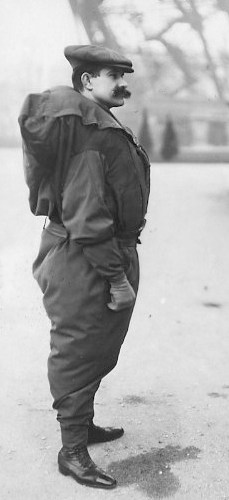
Francois Reichelt, before his fatal attempt, 1912
Invention: parachute suits
Reichelt, a tailor by trade, became obsessed with creating parachute suits for pilots who had to evacuate their crafts. Though his previous designs failed, Reichelt was convinced it was simply a matter of height. A large crowd gathered around the Eiffel Tower to watch Reichelt jump off inside of his parachute suit. Instead, he plummeted like a bullet into the ground. There is even a video out there of his fatal mistake.
Max Valier
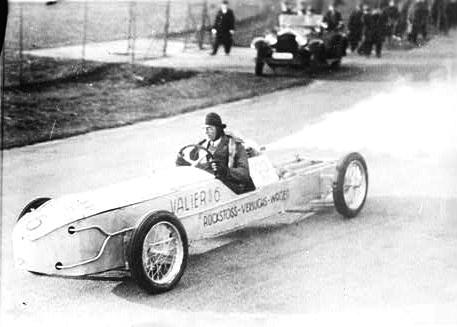
Invention: rocket car, rocket sled, “Spaceflight Society”
Austrian-born Max Valier was a pioneer in the field of rocketry. A prominent figure in Opel-RAK, the first serious rocket program, he also created a “Spaceflight Society,” which brought together many minds that one day made spaceflight a reality. Valier, along with Fritz von Opel and F.W. Sanders, built the world’s first rocket car, which was later followed by a rocket sled.
Though he had successfully tested several early rockets, it was when he began testing liquid propellant rockets for aircraft that proved fatal. While working in his laboratory, an alcohol-fueled rocket exploded on his test bench, killing Valier instantly. (For inventors who lamented their designs, here are inventors who regretted creating their own inventions.)
